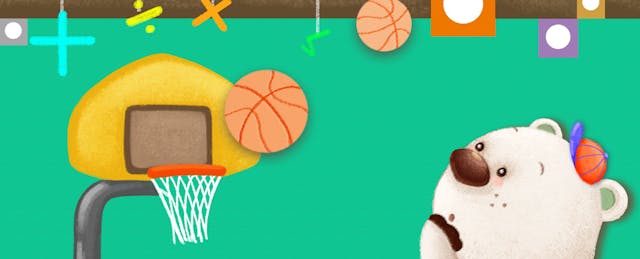Good luck filling out your March Madness bracket; according to Nate Silver’s blog, FiveThirtyEight, the chances of getting a perfect bracket this year are 1 in 1,610,543,269. With such lousy odds, it’s no wonder that many people rely on weird ways to make their picks: by favorite mascots, school colors, or asking their pets.
But not so in Nea CLC, a project learning-based charter school in Alameda, CA that my daughter, Mathilda, currently attends. Here, two classrooms totaling 52 fifth-graders are doing the math and calculating the odds. Math facilitators Rachel Howson and Lesley Pace have been leading the kids in a math learning project around March Madness, the NCAA men’s college basketball tournament that generates over a $1 billion in advertising revenue in a year.
But using March Madness—or basketball—to teach math doesn’t have to cost anything. Howson and Pace started the project by taking the kids out of the classroom and onto blacktop where they held a free throw competition. The kids tallied each other’s shot percentages and discussed probability and statistics. They explored questions like: If a student shot just one free throw and it went in, and another only made one out of three shots, theoretically the first person has a 100% success rate while the other person had only a 33% success rate. Should one really use that success rate to make predictions?
The students then marched back to the classroom to research the teams and calculate picks. They used resources like ESPN and YouTube to learn about each team’s odds, and even considered the picks from celebrities like President Obama. My daughter, Mathilda, said Howland asked her social network: “One of the really cool things that Miss Rachel did was she got the averages of what people picked on Facebook put and Iowa State was the most popular.” (Unfortunately, Iowa State, a third-seed, was upset by 14-seed University of Alabama at Birmingham.)
“The thing with March Madness is that it’s not completely statistics. It’s also based on what the [tournament selection] committee thinks,” said Vivian Biczynski, a student in Pace’s class, when explaining how she made her picks. “The first half of the bracket is pretty easy. When you get to the Sweet 16 it gets harder to choose because of the seeds. The committee for the tournament already picked seeds so you base your choices off of seeds or your opinions.”
Howson and Pace have been impressed with how seriously the kids are taking their brackets. “Sometimes it’s hard to get them to have any mathematical discussion without it feeling scripted, but with this it’s been a lot of authentic discussions. There are a lot of conversations about ‘Why did you pick that team?’” said Howson.
The learners even questioned Pace when she said she was picking Louisville to win because she liked that town and told her she should base her picks on proper research. In case you’re wondering, the class favorites to take home the championship are Kentucky, Gonzaga and Villanova, with the Kentucky Wildcats in the lead.
Howson and Pace are excited to see how this all progresses. It’s the first time they are doing this project and they’ve been figuring things out as they go. There are plans to award a prize to the learner with the most points from the brackets, although the prize has not yet been determined. And, sticking with the theme, they will also have the kids build a miniature model basketball court as part of a lesson on measurements and scaling.
When asked how she thought learning about “bracketology” and March Madness would help her outside of school, Biczynski revealed a dream that everyone held—briefly—last year. “There was a competition that one of the richest people in America said he’d give a billion dollars to the person who guessed a perfect bracket so you could become a billionaire!”
Unfortunately, Warren Buffett did not repeat his offer this year, so let’s hope that the kids aren’t counting on it.


